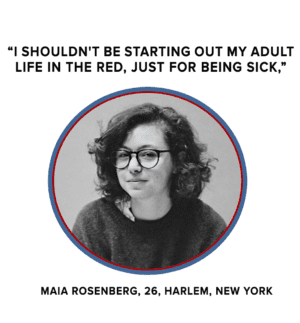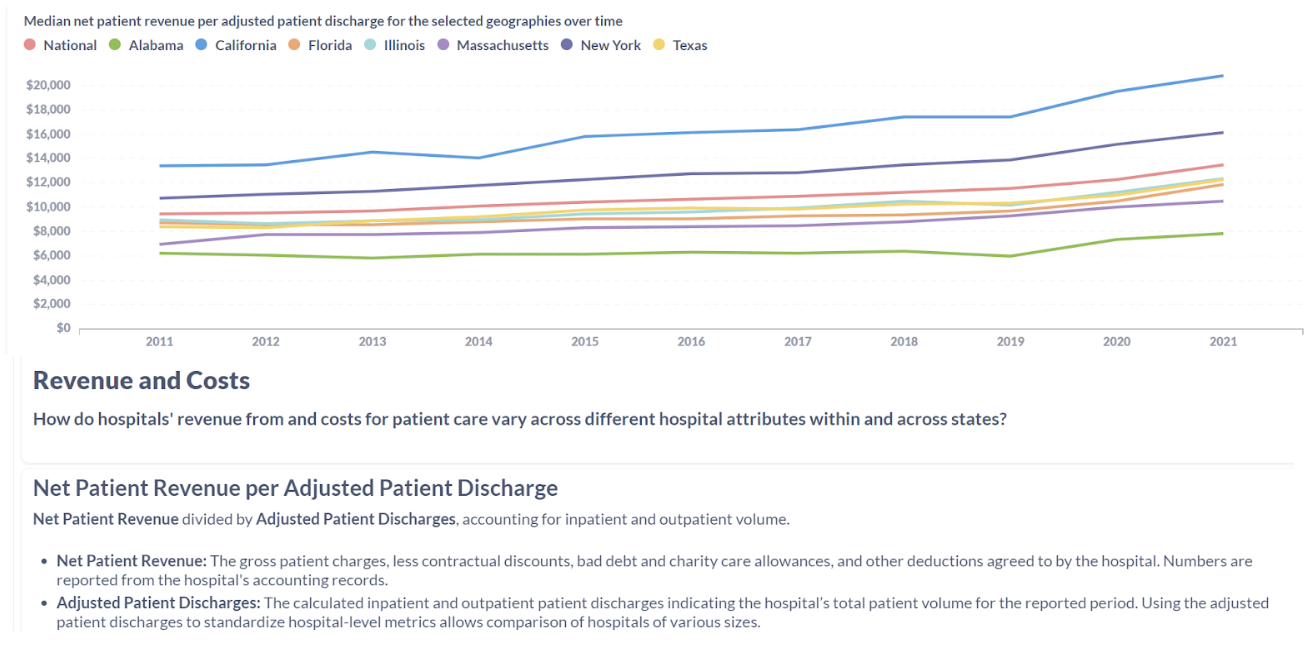
Ballooning medical debt contributes to the gross inequity and instability New Yorkers face. Even with insurance, thousands of people face overwhelming medical debt. Some nonprofit hospital systems have been known to sue patients for unpaid bills regularly. These debts also fall starkly along racial, socioeconomic, and generational divides, with young adults, communities of color, LGBTQIA+ communities, and people with chronic health conditions, including cancer, disproportionately experiencing financial burdens and, consequently, barriers to their health and financial security. Here we will discuss the state of medical debt among young adults in New York, share a few stories that highlight this issue, and propose recommendations for more effectively addressing, mitigating, and ultimately helping to prevent medical debt in New York.

Medical Debt impacts the lives of Young Adults

Battling severe asthma over the last ten years, Maia Rosenberg has been in and out of the hospital since January 2020 and dealing with her own ballooning medical debt. Maia has good insurance; however, living with chronic illness has increased her medical needs and bills exponentially. “I shouldn’t be starting out my adult life in the red, just for being sick,” Maia stated. Now, over three years into her hospital stays, Maia has lost count of how much she owes and believes the hospital has no idea either. “I have no clue, I have really no idea,” Maia told a Young Invincibles New York team member in a February 2023 interview.
“A lot of it would be so much easier if it was all consolidated in one… like what am I actually paying for? And where does it live?.” In Maia’s experience, her doctors don’t seem to have the full record of what services she’s received or how much their patients are paying for those services. To save money, Maia even brings her own medical equipment from home when possible. “I am already in so much debt, I am never going to pay it off anyway… I don’t own things, I [can’t take out] credit cards… I moved in with my mom… because I can’t live by myself with all of this stuff.” Maya also noted that, while looking for apartments in 2022 a real estate broker asked for her credit score and, when hearing it, told her “that’s a [little] low”. Her response: “Welcome to our country’s healthcare system”, aluding to how outstanding medical debt has hurt her credit score and thus hurt and limited her ability to be able to rent an apartment. Read more young adult medical debt stories in the brief.
New York State Hospital Costs Compared to other States and the National Median

Figure 1. National Academy for State Health Policy Hospital Cost Tool
Recommendations
This report recommends solutions that address the root causes of medical debt, protect patients, and improve oversight and transparency to ensure that all New Yorkers have access to equitable health care and prevent the growth of medical debt in the state.
1. Limit the prices that hospitals charge to (privately) insured patients.
2. Establish an “Office of Healthcare Accountability”.
3. Limit the practice of suing patients for medical debt
4. Regulate professional debt collections and lawsuits.
5. Create and require accessible price transparency for patients.
6. Require streamlined financial assistance processes.
